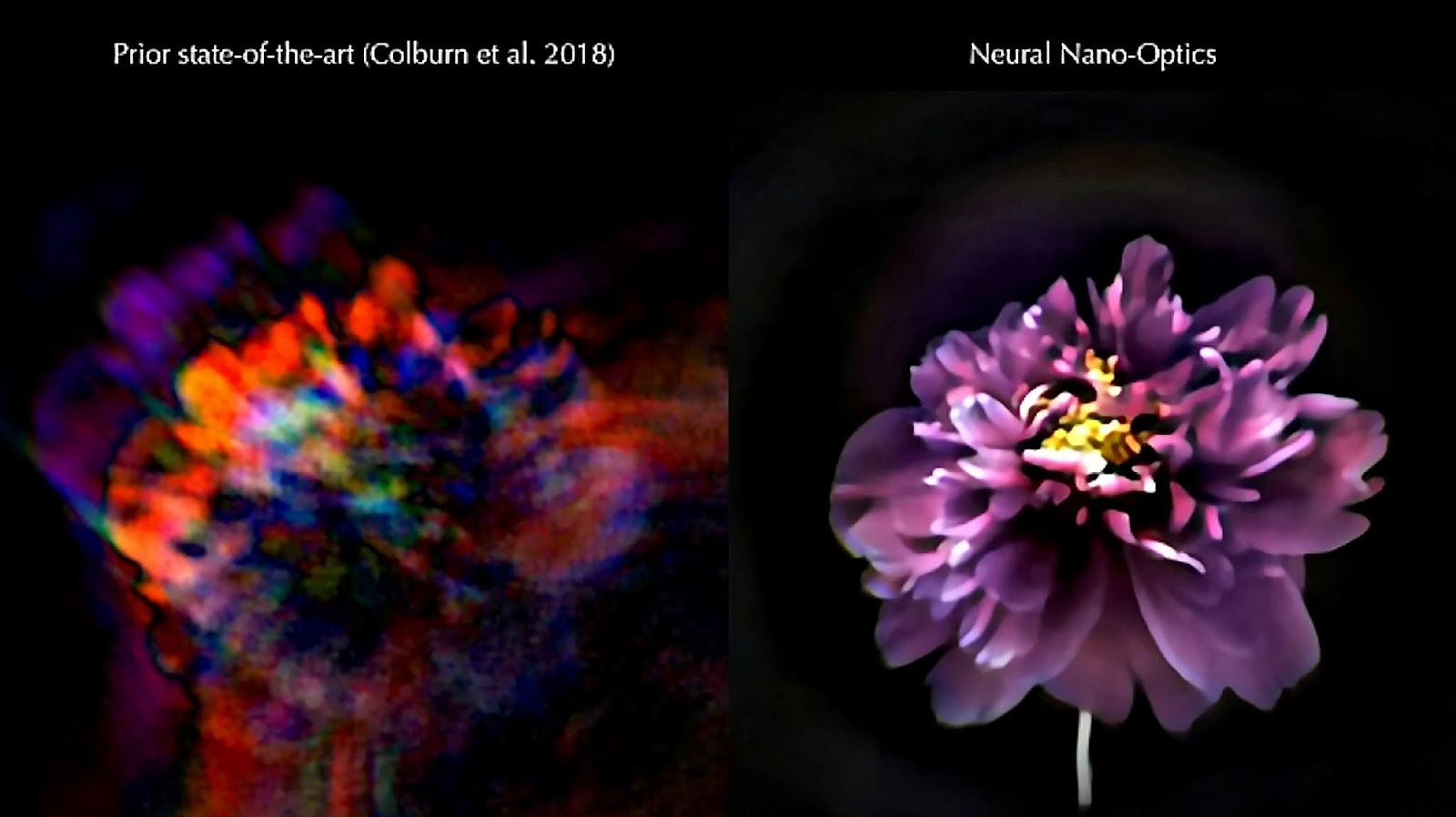Scientists Create World's Tiniest Camera, the Size of a Grain of Salt

Computer scientists from the University of Washington and Princeton University created the world’s smallest camera, it’s the size of a grain salt and it may soon be coming on mobile phones. This small device can take crisp, sharp and full-color pictures just as well as conventional cameras which are 500,00 times bigger.
The secret lies in over a million “eyes,” roughly the size of an HIV virus, covering the camera, known as its metasurface. When the antennae-like tiny posts interact with light, with the help of algorithms, they produce better pictures and capture a wider frame of view than any full-color metasurface camera created so far. The metasurfaces are made from silicon nitride, a glass-like material which can be manufactured easily and produced more cheaply than lenses in conventional cameras.
Scientists say in the report; "Each post has a unique geometry and functions like an optical antenna. Varying the design of each post is necessary to correctly shape the entire optical wavefront. With the help of machine learning-based algorithms, the posts’ interactions with light combine to produce the highest-quality images and widest field of view for a full-color metasurface camera developed to date,".

Although this is an all-purpose camera but its main application is the medical field as this is a significant advancement in the medical field, this new technology may help doctors to diagnose and treat illness far less invasively and with lesser risks than the traditional endoscope can do today. It will also make image quality much better, as thousands of tiny devices could cover the whole smartphone’s surface to become one giant camera, instead of needing 4 cameras for different purposes. A regular camera uses an array of lenses to bend light into focus, creating the sharp images it captures. But the camera has to be big enough to support those lenses.
Felix Heide, the study’s senior author and an assistant professor of computer science at Princeton said that a key innovation in the camera’s creation was the integrated design of the optical surface and the signal processing algorithms that produce the image. This enhanced the camera’s performance in natural light conditions, in contrast to previous metasurface cameras that required the pure laser light of a laboratory or other ideal conditions to produce high-quality images.
Princeton PhD student and study co-author Ethan Tseng said, that for capturing large field of view images; “it’s challenging because there are millions of these little microstructures, and it’s not clear how to design them in an optimal way,”. He went on to say that; “For this specific task of capturing large field of view RGB images, it was previously unclear how-to co-design the millions of nano-structures together with post-processing algorithms.” The team is now looking into expanding the computational abilities of the camera.
They not only want to continue making the image better, but they are also investigating how to add capabilities for object detection and other features that might make this a revolutionary instrument for medicine and robotics.
This is the first-time researchers have used a design where optical technology is in the front end, and neural processing is working in the back end. Experts think this breakthrough will open the doors for “completely different ways of building devices in the future”.
Post a Comment